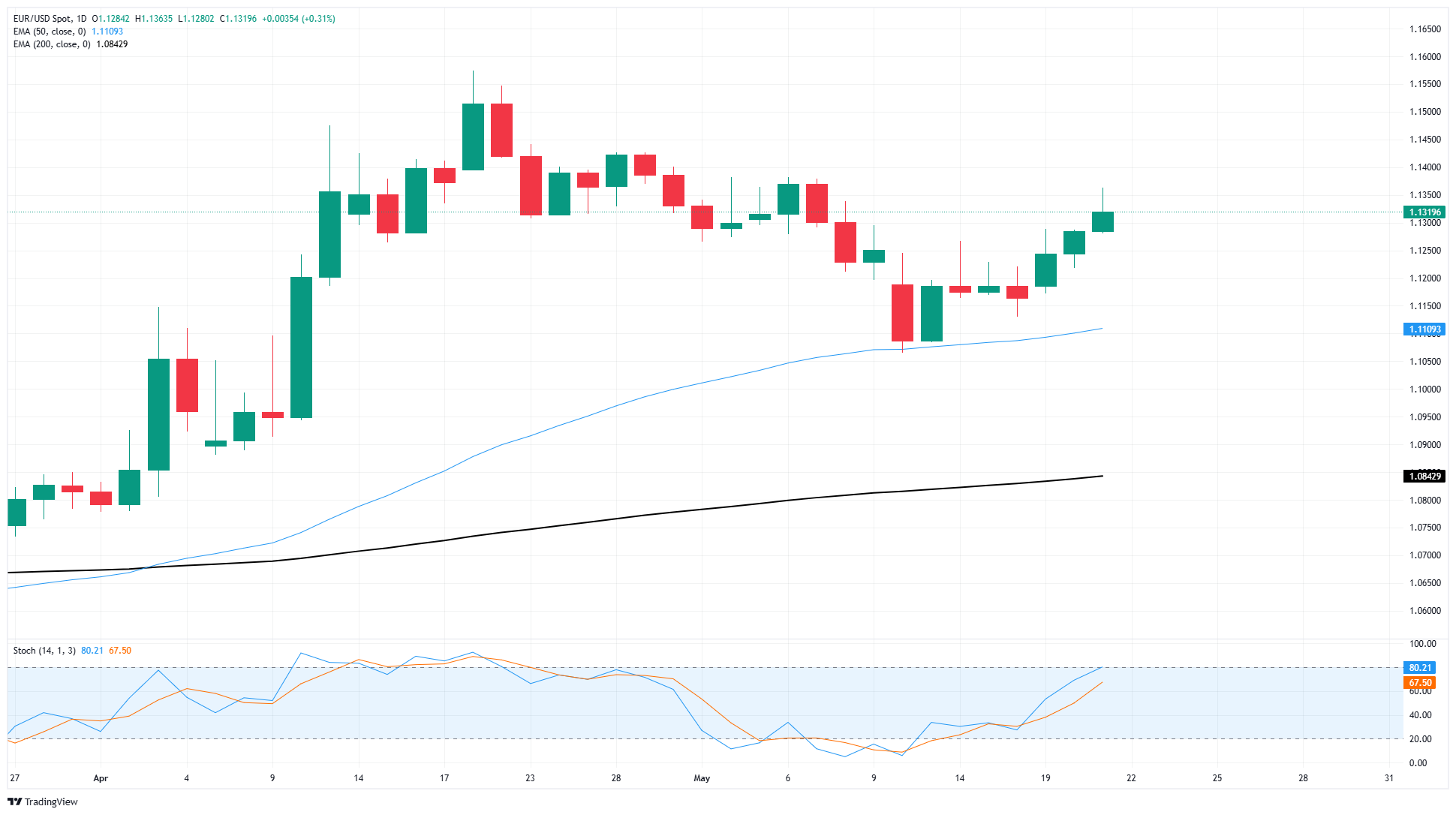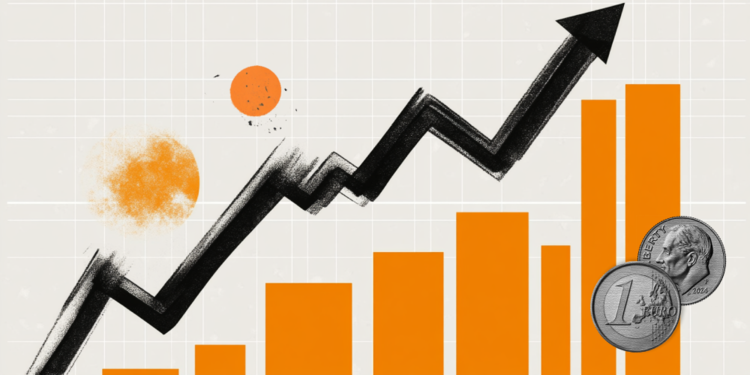- EUR/USD broke above the 1.1300 handle on Wednesday.
- Markets soured on the US Dollar after Treasury yields rose and bond demand fell.
- PMI double-header on the cards for Thursday as business survey results land on both sides of the Pacific.
EUR/USD caught a bid on Wednesday, breaking through the 1.1300 technical barrier and climbing for a third straight session after market sentiment turned away from the US Dollar following a pummeling of US Treasury markets. Treasury yields rose and demand for 20-year Treasury bonds fell in a mid-session bond auction, prompting a general pullout from US assets, including the Greenback, which is generally considered a safe haven.
US 20-year Treasury yields rose above 5% on Wednesday, sparking a flight out of US capital assets. Even with the rise in yields, investors still turned apprehensive on Treasuries, with bid-to-cover ratios falling below their six-month averages. The US government is on pace to pass President Donald Trump’s “big, beautiful bill” for the federal government’s tax and budget plans, which includes steep declines in critical services spending, and even steeper declines in federal tax receipts. The budget bill is broadly expected to add up to $4T to the US deficit over the next ten years. President Trump campaigned on reducing the deficit and eliminating US government debt.
Purchasing Managers Index (PMI) figures are due on Thursday. Pan-European PMIs are expected to rise slightly across the board, while US PMIs are forecast to come mixed. European Services PMI aggregate survey results are expected to rise to 50.3 from 50.1, while the manufacturing segment is expected to improve to 49.3 from 49.0. On the US side, Manufacturing PMIs are expected to tick down to 50.1 from 50.2, while the Services component is seen holding flat at 50.8.
EUR/USD price forecast
Bullish momentum continues to push EUR/USD higher following a technical bounce from the 50-day Exponential Moving Average (EMA) near 1.1100. The pair has closed higher for all but two of the last seven consecutive trading sessions, and price action is tilted firmly to the bullish side as intraday price action looks for a foothold from 1.1300.
Technical oscillators are nearly out of room to run, implying a technical reversal could be on the cards in the near-term. However, Fiber is still trading well north of its 200-day EMA near 1.0840.
EUR/USD daily chart

Euro FAQs
The Euro is the currency for the 19 European Union countries that belong to the Eurozone. It is the second most heavily traded currency in the world behind the US Dollar. In 2022, it accounted for 31% of all foreign exchange transactions, with an average daily turnover of over $2.2 trillion a day.
EUR/USD is the most heavily traded currency pair in the world, accounting for an estimated 30% off all transactions, followed by EUR/JPY (4%), EUR/GBP (3%) and EUR/AUD (2%).
The European Central Bank (ECB) in Frankfurt, Germany, is the reserve bank for the Eurozone. The ECB sets interest rates and manages monetary policy.
The ECB’s primary mandate is to maintain price stability, which means either controlling inflation or stimulating growth. Its primary tool is the raising or lowering of interest rates. Relatively high interest rates – or the expectation of higher rates – will usually benefit the Euro and vice versa.
The ECB Governing Council makes monetary policy decisions at meetings held eight times a year. Decisions are made by heads of the Eurozone national banks and six permanent members, including the President of the ECB, Christine Lagarde.
Eurozone inflation data, measured by the Harmonized Index of Consumer Prices (HICP), is an important econometric for the Euro. If inflation rises more than expected, especially if above the ECB’s 2% target, it obliges the ECB to raise interest rates to bring it back under control.
Relatively high interest rates compared to its counterparts will usually benefit the Euro, as it makes the region more attractive as a place for global investors to park their money.
Data releases gauge the health of the economy and can impact on the Euro. Indicators such as GDP, Manufacturing and Services PMIs, employment, and consumer sentiment surveys can all influence the direction of the single currency.
A strong economy is good for the Euro. Not only does it attract more foreign investment but it may encourage the ECB to put up interest rates, which will directly strengthen the Euro. Otherwise, if economic data is weak, the Euro is likely to fall.
Economic data for the four largest economies in the euro area (Germany, France, Italy and Spain) are especially significant, as they account for 75% of the Eurozone’s economy.
Another significant data release for the Euro is the Trade Balance. This indicator measures the difference between what a country earns from its exports and what it spends on imports over a given period.
If a country produces highly sought after exports then its currency will gain in value purely from the extra demand created from foreign buyers seeking to purchase these goods. Therefore, a positive net Trade Balance strengthens a currency and vice versa for a negative balance.

